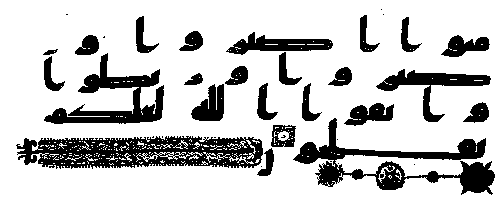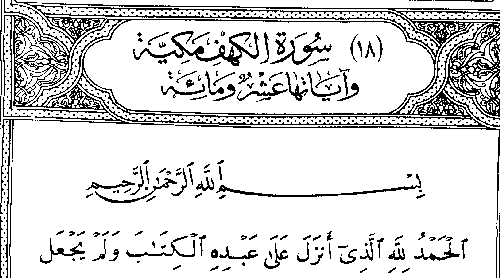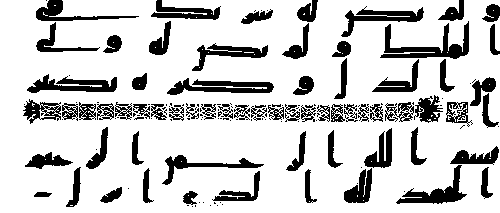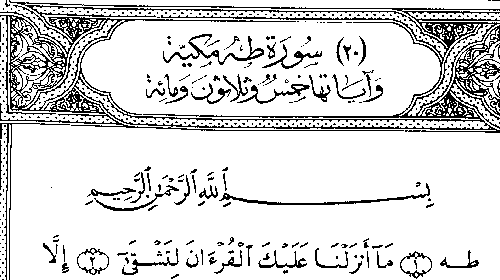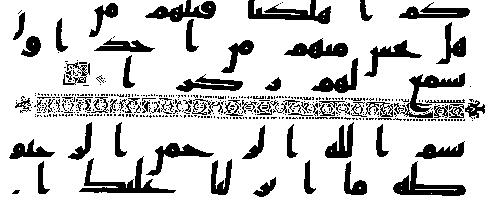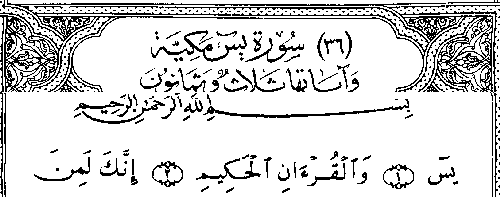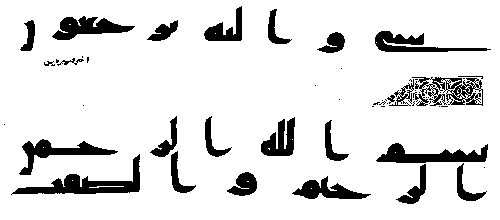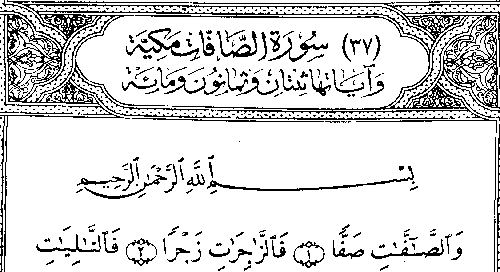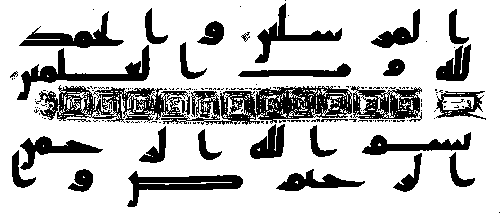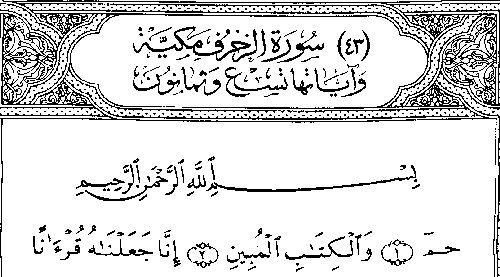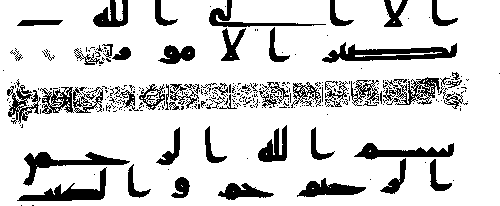|
CHAPTER IX (CONTINUED) |
|||||||||||
| Back
To Main Index
Back To Part 2 Index |
|||||||||||
|
"They Will Be found To Be Identical"? After all this we need to look again at Von Denffer’s preposterous claim that Islam has ‘two (2) originals which are identical to all other texts’: "In other words: two of the copies of the Qur’an which were originally prepared in the time of Caliph `Uthman, are still available to us today and their text and arrangement can be compared, by anyone who cares to, with any other copy of the Qur’an, be it in print or handwriting, from any place or period of time, they will be found to be indentical." (Ulum, p.64)Von Denffer is not alone in his assertions. For example, the Khalifornia Internet site declares: "Uthman sent these six copies all over the Muslim world, keeping one copy in Madinah and returning the original master copy to Hafsah. These were known as the "Uthmanic Mushaf", and since then, Muslims duplicated all of their copies from these master copies. (In fact, three of these original six copies from this period exist today: one in the Topkapi Museum in Istanbul, another in the Cairo Museum, and a third in Bukhara).Yet another site asserts: "Of the copies made by Uthman, two still exist to our day. One is in the city of Tashkent, (Uzbekistan) and the second one is in Istanbul (Turkey)." (Sabeel Ahmed, a former student of Ahmed Deedat, http://www.iol.ie/~afifi/BICNews/Sabeel/sabeel3.htm)The same site displays a large diagram indicating that there are 2 methods of transmission of the Qur’an to what it labels ‘OUR TIME’. The 2 methods which are said to ‘assure’ that the Qur’an is the same today as it was in Muhammad’s day are ORAL and WRITTEN. Under the ‘WRITTEN’ side we find 2 things ONLY - ‘ISTANBUL COPY’ and ‘TASHKENT COPY’. We have already seen that this assertion concerning the ‘WRITTEN’ SOURCE is not a truth. Remember, we have only examined perhaps 33% of the Qur’an’s text1, and what we have shown does not represent all that we have found. Yet, it presents us with the clear perspective that although the manuscripts of the Qur’an are not anywhere near ‘identical’ and Islam isn’t copying the DIAGRAM 2 - NO COPYING OF MANUSCRIPTS 66
Part 2: The True State Of The Qur'an the Samarqand MSS as an ‘original’, it has been quite prepared to lie about itself being able to, and attack others for not being able to. Islam can no longer tell us that it ‘relies’ on ‘perfect copies’ as its ‘Proof’. Knowing as we do that Islam accepted all of ‘Uthman’s errors and made them ‘revelation’, we can believe that perhaps the ‘Uthmanic story is a cover-up for something far worse than Islam cares to reveal and the Samarqand is the last evidence?! Indeed, the tactics of Islam being what they are about telling tales about ‘ancient manuscripts’, it is altogether possible that the entire Samarqand text is simply another ‘Uthmanic manuscript strain which Islam has hidden from the world. The truth is that Islam only cries ‘scribal error’ now that it has been caught misrepresenting itself by telling the world that this is an ’original’ and that all others are the copies, and that this is ‘Proof’ that the Qur’an is ‘Perfect and Preserved by Divine Decree’. And all the while shouting that everyone else has altered their ‘Books’!! If Christians were guilty of doing this Islam would shout the roof down! Is this the ‘perfection’ you have believed about and put your
hope in?
A Definite Change In Meaning While our purpose was solely to indicate letter differences and refute the idea that the Samarqand is ‘an original whose content proves the modern version’, we note one example of a meaning which is altered (in Q37:103) because of the letter differences which are present in the Samarqand MSS. First we note the text from Page #652 of the Samarqand
MSS (found in Appendix A) which plainly begins with the letters
waw mim-alif. A transliteration of the text shown (see to right) would
be wa ma ‘aslamA. Beneath that we find the text of the 1924 Egyptian Edition which
begins with the
Still other texts contain wrong letters or wrong verb tenses. Are these ‘original’ grammatical errors that were later corrected in the same way as al-Hajjaj changed certain texts of the Qur’an? [See Chapter XIV, p165.] DON’T PLACE YOUR HOPE OF HEAVEN ON THIS transmitting anything ‘Perfectly’!! 67
Part 2: The True State Of The Qur'an Some Comments From The Internet On This Comparison It is, of course, difficult for most followers of Islam to accept such a comparison solely from the mouth of a Christian. Thus we will note some comments made during June - Oct., 1999 on this aspect of the book after it was posted for discussion into the Islamic Internet discussion group soc.religion.islam. The following are the assertions of one follower of Islam who examined the text of ‘A Perfect Qur’an’ on the Internet. He possesses his own copy of the Samarqand MSS and intends to publish it: "I want to emphasise this point. Mark has found true manuscript variations in the Tashkent muSHaf. That is, they are "true" when it comes to actually representing changes of the *letters*." (Internet articleAnd, "For my own purposes, I am grateful for what Mark, the author of the "Perfect Qur’an" polemic, has discovered about the Tashkent. It is extremely tedious to search out these variations. (Internet articleAlso, "Mark has done an interesting piece of work by carefully searching for variations in the Tashkent. I hope to find the time to go over all the alleged variations he reports; I think he has saved me quite a bit of work, for it is not easy to read that script. What I’d like to do is determine if there are any characteristics in the Tashkent which relate to the variations in the transmitted readings. So far, I have found none, which is, by the way, another sign that the variations in the Tashkent are simply scribal errors, errors which were not, as Br. Ghoniem notes, passed on by the reciters. The oral transmission was primary, the written one secondary, though both were important and it was the combination of the two which made the preservation of the Qur’aan a remarkable as it is.The purpose of this Chapter has been solely to address persons who believe that the Samarqand MSS (Tashkent) is ‘a perfect original’ which ‘certifies’ fully the graphic form of the Qur’an. Such persons should now know NOT to place their hope of a ‘preserved Qur’an’ on it! Why Are They ‘Outwitting’ Their Own People? Dr. Maurice Bucaille’s statement about the Bible can now certainly be seen to be another ‘outwitting’, something said with the full knowledge that it refers to the true condition of Islam and the Qur’an: "The authenticity of a text, and of even the most venerable of manuscript, is always open to debate." (The Bible, Qur’an and Science, Bucaille, p. 79; as cited from The Qur’an and the Bible.., Campbell, p.132). |
|||||||||||
| Back To Top | |||||||||||
|
|
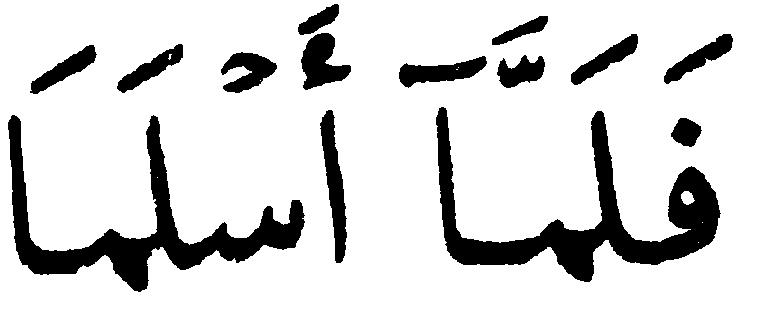 would be falammA‘slamA. The translation of this
is "When they too submitted (became muslims)". This is the exact
opposite of the Samarqand MSS!
would be falammA‘slamA. The translation of this
is "When they too submitted (became muslims)". This is the exact
opposite of the Samarqand MSS!






